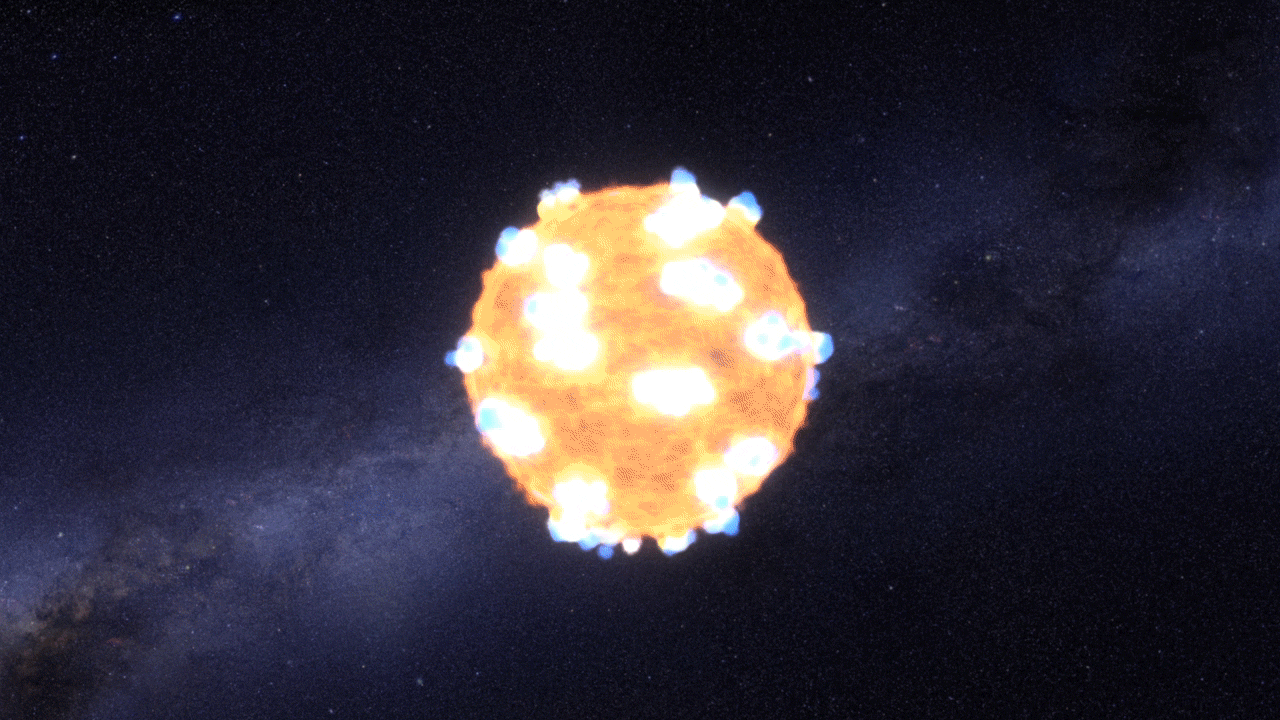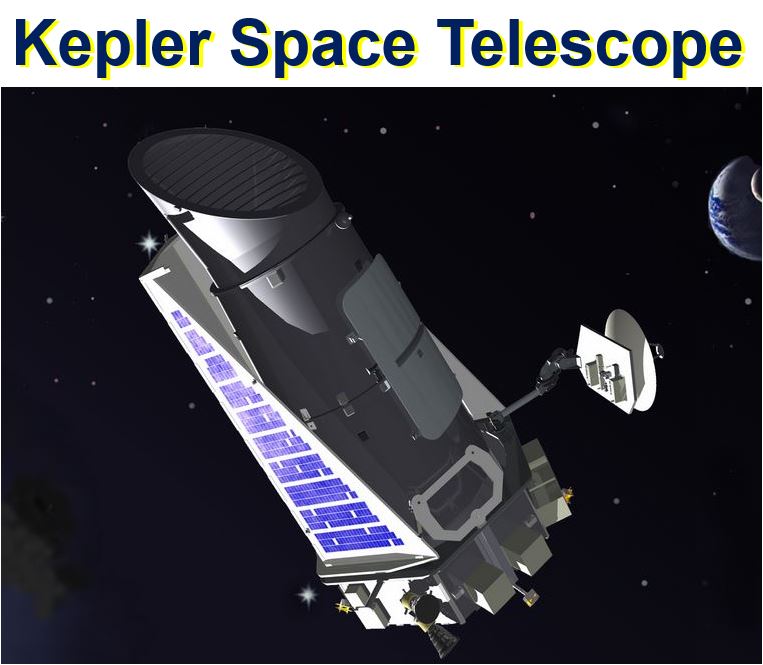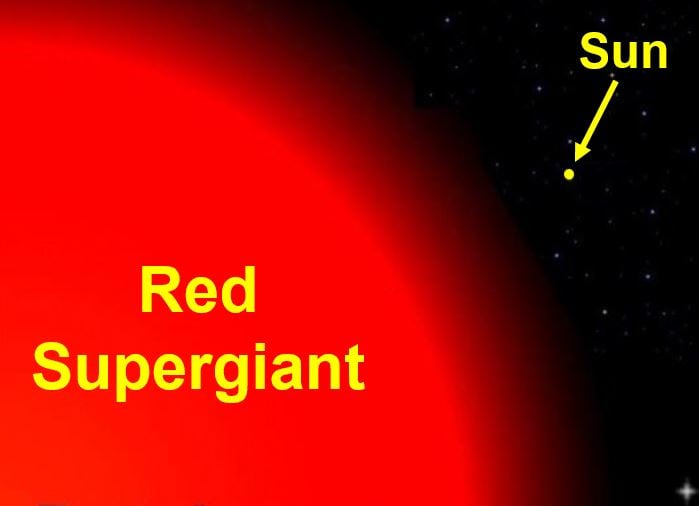The shockwave of a massive star explosion has been captured by NASA’s Kepler space telescope, known as the planet hunter. This is the first time a ‘shock breakout’ of a supernova has been captured in visible light wavelengths, says an international team of astronomers.
The scientists, from the United States and Australia, wrote about their study and findings in the Astrophysical Journal (citation below).
Peter Garnavich, an astrophysics professor at the University of Notre Dame in Indiana, and colleagues analyzed light captured by the Kepler space telescope every thirty minutes over a period of three years, and covering about 50 trillion stars spread across more than 500 galaxies.
 The brightness of a supernova event relative to our Sun as the supernova unfolds over time. For the first time, a supernova shock wave (shock breakout) has been observed in visible light wavelengths as it reached the surface of the star from deep within its core. The explosive death of this star – KSN 2011d – reached its maximum brightness in about 14 days. The shock breakout itself lasted only about 20 minutes. (Image: nasa.gov. Credit: W. Stenzel)
The brightness of a supernova event relative to our Sun as the supernova unfolds over time. For the first time, a supernova shock wave (shock breakout) has been observed in visible light wavelengths as it reached the surface of the star from deep within its core. The explosive death of this star – KSN 2011d – reached its maximum brightness in about 14 days. The shock breakout itself lasted only about 20 minutes. (Image: nasa.gov. Credit: W. Stenzel)
Kepler observed two red supergiant explosions
The scientists were hunting for signs of supernovae – stars that suddenly increase greatly in brightness because of a catastrophic explosion that ejects most of their mass. The explosions occur when the star is dying.
Two red supergiants exploded in Kepler’s view in 2011. Supergiants are the largest stars in the Universe in terms of volume (not necessarily the most massive).
The first red supergiant, KSN 2011a, 700 million light years from Earth, is almost 300 times the size of our Sun. The second behemoth, KSN 2011d, is 1.2 billion light years away and about 500 times the size of the Sun.
 The early flash of an exploding star caught for the first time. (Animation: nasa.gov)
The early flash of an exploding star caught for the first time. (Animation: nasa.gov)
Prof. Garnavich, who led the analysis effort, said regarding how big these red supergiants are:
“To put their size into perspective, Earth’s orbit about our sun would fit comfortably within these colossal stars.”
Images help us understand what happened
Capturing images of sudden, catastrophic events such as a plane or car crash, is extremely difficult, but useful for understanding why it happened. It is the same with supernovae, if you can capture images of them, you have a better chance of understanding the root cause.
Kepler’s steady gaze allowed the scientists to finally see a supernova shock wave as it reached the surface of a star.
Catching this flash of energy is a major investigative breakthrough for astronomers, because the shock breakout is extremely brief, lasting no more than twenty minutes.
Co-author, Edward Shaya, an associate research scientist in astronomy at the University of Maryland, said:
“Like police getting surveillance footage of a crime after the event, we can study brightness histories from Kepler to find out what was happening in the exact hour that the shock wave from the stellar core reached the surface of the star.”
“These events are bright enough that they change the brightness of the whole galaxy by a measurable amount.”
 Kepler is a space observatory NASA launched on 7th March, 2009. It was named after Johannes Kepler (1571-1630), a German mathematician, astronomer, and astrologer. (Image: nasa.gov)
Kepler is a space observatory NASA launched on 7th March, 2009. It was named after Johannes Kepler (1571-1630), a German mathematician, astronomer, and astrologer. (Image: nasa.gov)
Such supernovae – called Type II – start when the internal furnace of a star runs out of nuclear fuel, resulting in the collapse of its core as gravity takes over. The two supernovae matched up well with mathematical models of Type II explosions, which confirmed some existing theories.
Shock breakout detected in just one explosion
However, the explosions also revealed an unexpected variety in these cataclysmic stellar events. While both explosions delivered similar energetic punches, no shock breakout was detected in the smaller of the two red supergiants.
The authors believe this was likely due to the smaller star being surrounded by gas – with perhaps enough to mask the shock wave when it reached its surface.
Prof. Garnavich said:
“That is the puzzle of these results. You look at two supernovae and see two different things. That’s maximum diversity.”
 Red supergiants are the largest stars in the Universe, many of them several hundred times larger than our Sun.
Red supergiants are the largest stars in the Universe, many of them several hundred times larger than our Sun.
By studying the physics of these giant explosions, scientists say they get a better understanding of how the seeds of chemical complexity and life itself have been scattered in time and space in our own galaxy (Milky Way).
Life exists thanks to supernovae
Steve Howell, project scientist for NASA’s K2 and Kepler missions at NASA’s Ames Research Center in California’s Silicon Valley, said:
“All heavy elements in the universe come from supernova explosions. For example, all the silver, nickel, and copper in the earth and even in our bodies came from the explosive death throes of stars. Life exists because of supernovae.”
Shaya, Garnavich and their co-authors form part of a research team known as the Kepler Extragalactic Survey (KEGS). They have nearly finished mining data from Kepler’s primary mission, which ended in 2013.
However, with the reboot of the Kepler spacecraft as NASA’s K2 mission, they are now hunting for supernovae events in other faraway galaxies.
Dr. Shaya said:
“It is a thrill to be a part of theoretical predictions becoming an observed and tested phenomenon. We now have more than just theory to explain what happens when a supernova shock wave reaches the surface of a star as that star is totally torn apart.”
The authors made the following comment regarding the two explosions in an Abstract in the journal:
“No shock breakout emission is seen in KSN2011a, but this is likely due to the circumstellar interaction suspected in the fast rising light curve.”
“The early light curve of KSN2011d does show excess emission consistent with model predictions of a shock breakout. This is the first optical detection of a shock breakout from a SNe II-P.”
Citation: “Shock Breakout and Early Light Curves Of Type II-P Supernovae Observed with Kepler,” P. M. Garnavich, B. E. Tucker, A. Rest, E. J. Shaya, R. P. Olling, D Kasen and A. Villar. The Astrophysical Journal – Volume 820, Number 1. 14 March 2016.
Video – Early flash of an exploding star
This video, from NASA’s Ames Research Center, shows the brilliant flash of an exploding star’s shockwave – known as the ‘shock breakout’ by astronomers. The animation starts off with the view of a red supergiant star that is 500 times larger and 20,000 times brighter than our Sun.
